The Rhythm of Junkanoo: The Bahamas’ All-Night Carnival of Color and Sound
From the pulse of goat-skin drums to dazzling feathered costumes, Nassau’s Junkanoo festival transforms the streets into an open-invitation bucket-list party

The wall of vibrant sound that is Junkanoo is the first sign that Nassau is throwing an epic party.
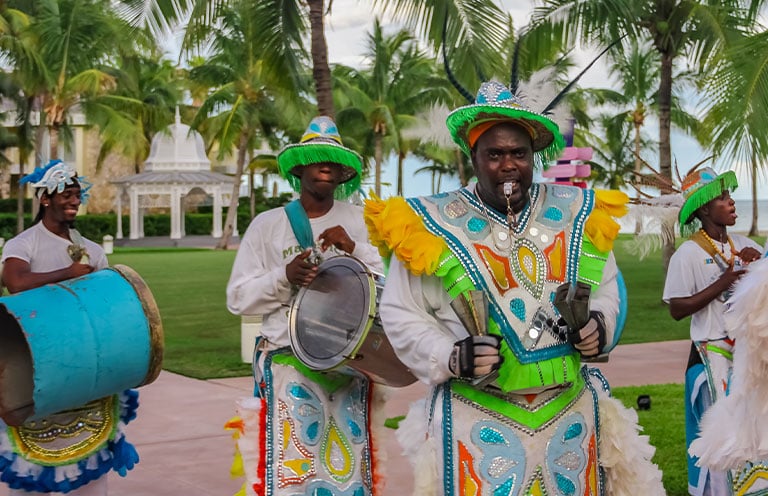
The goat-skin drumming sets the pace, rhythmic and relentless. Since the 1970s, brass has joined the scene, with trombones, saxophones, and sousaphones punctuating the hypnotic beat. Old- school instruments still hold their own: cowbells, whistles, scrapers, and conch shells take the soundtrack back to when this cultural tradition officially began in The Bahamas in the early 1800s, though its roots stretch further back, to the rhythms of ancestors in Ghana.

“Junkanoo isn’t just a party for us,” says author and CEO of Ride Bahamas John McPhee, describing the electric energy that takes over the Islands of The Bahamas in December. “It’s a religion.”
If this is church, it’s the kind that lasts all night and draws thousands of dancing onlookers to Bay Street, the main drag in Nassau, the capital city on New Providence. Junkanoo is a raucous carnival—a biannual celebration of sights and sounds that happens during the early morning hours on Boxing Day, December 26, and New Year’s Day, January 1.
For travelers seeking a new and exciting way to celebrate the holidays, reveling the night away in the balmy Bahamas to a Junkanoo beat is one for the ages.
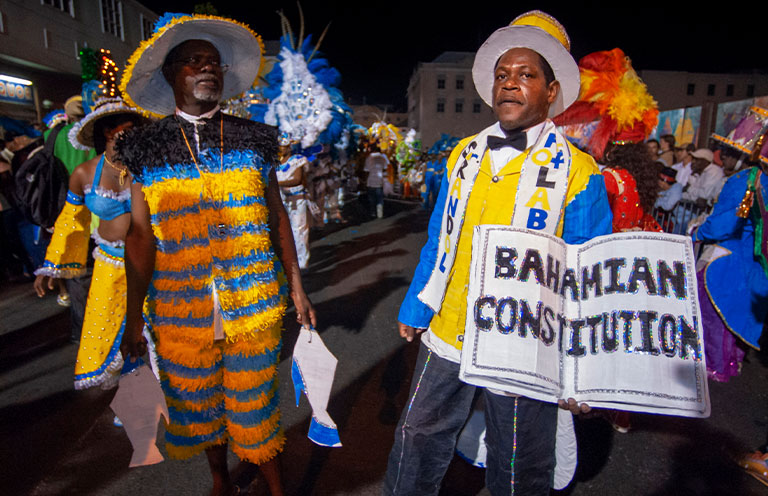
Tracing the roots of Junkanoo
Under British rule in the 1700s, enslaved Africans in The Bahamas were given a few days off during the holiday season—precious hours they used to celebrate their cultural heritage with music, dancing, and costumes made from materials at hand, such as sponge, straw, and shells. Many believe the name Junkanoo traces back to John Canoe (or Jonkonnu), a West African tribal leader who fought against slavery and oppression. Enslaved people used the festival as a means of cultural survival and subtle protest.
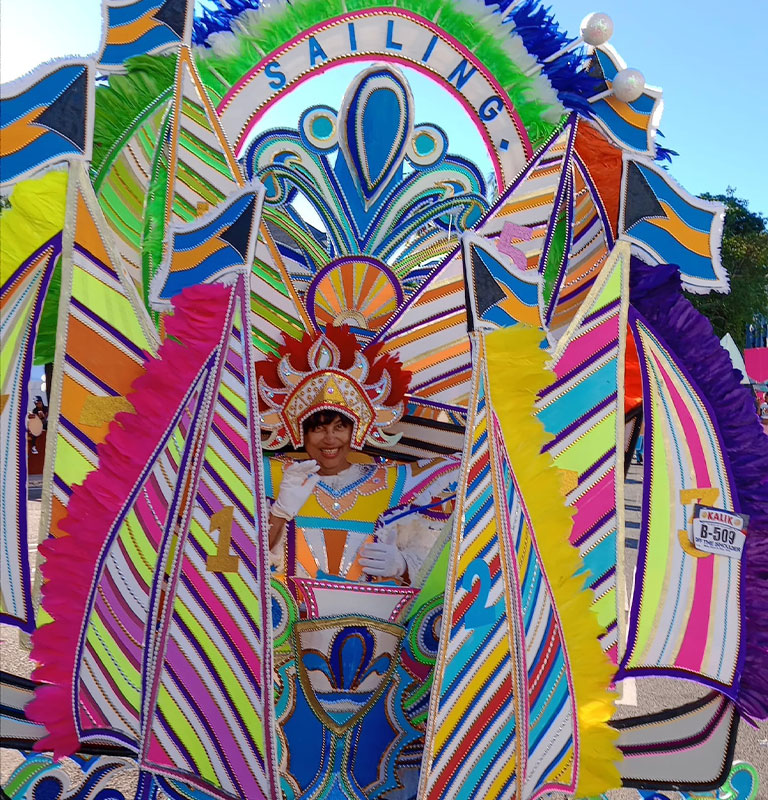
What is now a holiday celebrating Bahamian pride and independence wasn’t always so respected, according to Junkanoo historian Arlene Nash Ferguson, who recently celebrated her 70th year “rushing”—the Bahamian term for dancing in the parade—both as a spectator and as a costumed group member. The BBC has called her “The Bahamas’ Queen of Junkanoo.”
“It was not something that people from good families did,” Nash Ferguson recalls. “It was looked down upon. If somebody called you a Junkanoo, you were ready to fight. There was nothing positive about it in the public eye. Over the years, we have changed that.”
The celebration, along with all street gatherings, was banned by the government for five years, from 1942 to 1947, following labor unrest and protests. “But the drums never stopped beating in the African townships that circled the town of old Nassau,” says Nash Ferguson.
Her uncle was among those instrumental in reinstating the cultural celebration, becoming a community leader in the process. “He was personally escorted to and from Bay Street every Junkanoo out of respect,” she says.
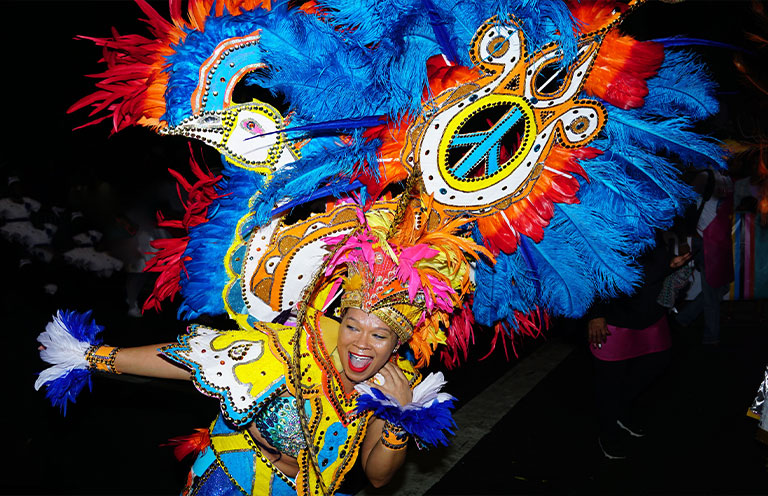
Junkanoo shares common threads with Carnival in Brazil and Mardi Gras in New Orleans. It’s celebrated throughout The Bahamas—and in smaller grassroots parades across the Caribbean. As in Brazil, it’s a musical street party, a feast for the senses filled with music, dancing and over-the-top costumes. Dancers wear huge feathered headdresses, while others don bright, revealing costumes as they move to the pulsing beat.
Bahamians spend months choosing themes, building elaborate and often costly costumes, and rehearsing the music that powers the parade. Because the costumes are so large that they can’t fit through a regular door, they’re assembled in “shacks”—workshops with oversize doors that let dancers walk straight out and into the parade.
Groups compete for cash prizes, an incentive to keep raising the bar on the spectacle. Just as in New Orleans, Junkanoo is a spectator sport, drawing crowds along Nassau’s narrow Bay Street for the mile-and-a-half route that loops along Bay and Shirley Streets.

How to attend Junkanoo
What used to start at 4 a.m. on December 26 has inched closer to Christmas night over the years, as more and more groups have joined the parade. “Now we start at 9 p.m. Christmas night and keep going until two or three in the afternoon,” Nash Ferguson says.
All ages take part and keep watch through the night. On New Year’s Day, the parade starts at 2 a.m., after many Bahamians ring in the New Year at church. The final drumbeat sounds around 11 a.m.—“or until we’re finished,” says Nash Ferguson. Street vendors feed the hungry crowds, while rum punch keeps spirits high.
Visitors should plan well in advance to catch this extravaganza. Hotels closest to the downtown Bay Street parade route book up early, and grandstand seating, which costs about $50, sells out fast.
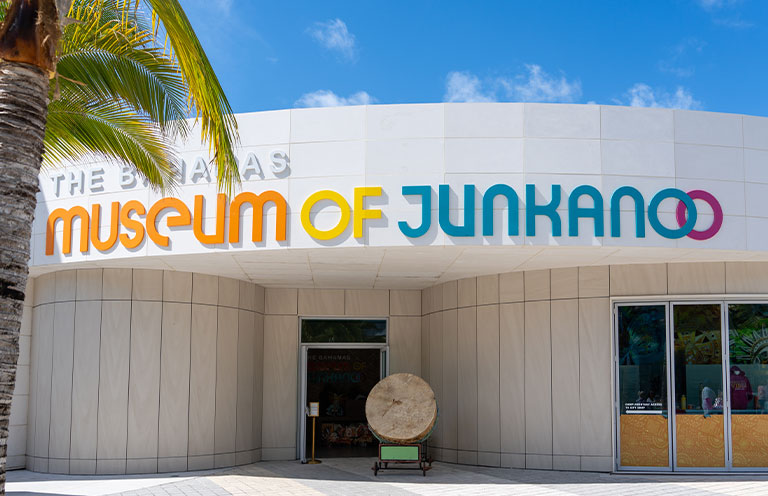
If you’re visiting The Bahamas at a another time of year, you can still get your Junkanoo fix at Nash Ferguson’s interactive Educulture Junkanoo Museum in downtown Nassau. There, visitors can admire costumes through the decades, learn to play the cowbell, and hear the music that drives this cultural celebration.
Nash Ferguson opened the museum in 2000 in the home where she grew up and first fell in love with Junkanoo. “I couldn’t wait for it, every year,” she recalls. “I still can’t.”
